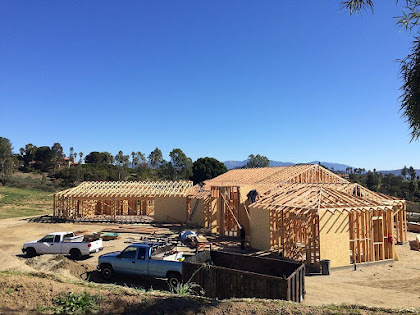What Are Secondary Stresses on Roof Trusses?
Generally, when you are dealing with a professional roof truss company in San Diego, you may give very little thought to the science that goes into building your trusses. After all, Roof Truss Manufacturers in San Diego employ experts who calculate load and stress so that you do not have to! However, having a general idea of the stresses that affect roof trusses can also help you when designing and building homes, as you can better envision the type of force that your roof may be subjected to. It is also important to understand why slight inaccuracies in truss building can affect the quality of your work to a much larger degree than anticipated. In some cases, inaccuracies in truss construction can result in faults that lead to serious problems.
What Are The Types Of Stresses on Roof Trusses?
Trusses are designed to deal primarily with two types of stresses: compressive and tensile. Compressive stress refers to the force when members of a truss are pushed together, while tensile stress refers to forces that pull members away from each other. These two stresses are well-accounted for in truss construction, with each member being analyzed carefully for both types of stress. However, there are other stresses that typically appear with truss construction; it is important to understand these secondary stresses and account for them in building a solid roof.
●
Joint rigidity. If the plates that connect the members of the
truss are not aligned properly, there can be joint stress or rigidity. This force can translate to the rest of the
truss, causing failure at one or more locations.
●
Lack of fit. If the members of the truss are not cut to
the correct length or not fitted together properly, they may put undue stress
on various parts of the truss. In fact,
incorrectly fitted members are probably one of the most common causes of undue
compressive or tensile stresses on a truss.
●
Thermal expansion and
contraction. Because trusses are made of
wood, they are subject to expansion and contraction from temperature
variations. While this is not a problem
in some climates, it can definitely be a factor in areas where more extreme
weather is common.
●
Mis-assigned
loads. Trusses are designed to bear
forces at certain points. If the load is
instead placed at another location on the truss, some stress may develop. This can normally be absorbed, as the truss
is rated for particular loads, but placing a large amount of unaccounted for
load on one spot can damage the truss.
● Eccentricity of bolt line. The bolt line refers to the imaginary line in which the connectors, or bolts, of the truss lie. If this is parallel to the load, and the bolt is off-center, compressive stresses could develop. The same is true if the bolt line is perpendicular to the load; off-centering could result in tensile stresses.
As one of the leading Truss
Manufacturers in San Diego, Stone Truss has been providing quality
truss roofing materials for decades to our clients. Builders know that Stone Truss will work with
them to create the right trusses for their unique building requirements, construct
them with quality materials, and deliver them to the job site, on time. With the Stone Truss advantage, your days of
worrying about truss roofing materials are over! Give us a call to discuss your next roofing
project, and find out why so many San Diego builders have been using Stone
Truss for years with consistent, reliable results.




Comments
Post a Comment